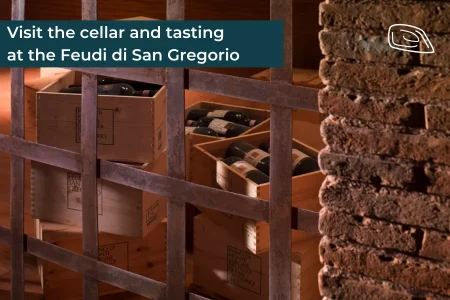Irpinia
Irpinia is a provincial district of the city of Avellino in the Campania region. The town of Avellino is located in a valley of volcanic origin an integral part of the Campanian Apennines and for this reason, it is called the Avellino basin. The context is surrounded by some mountain ranges; to the east, there is Mount Tuoro while on the southern side there is the Picentini Mountains chain and to the north Montevergine. The latter is a pilgrimage and is located on a summit accessible through paved paths and all characterised by various types of curves. On the occasion of a holiday in Irpinia, there is much to see and appreciate by those who love nature. The local flora and in particular in Avellino is very lush, even if the hazelnuts are famous. In the land of Irpinia, the climate is particularly muggy in summer but very cold in winter. In this sense, for snow lovers, the various cities and the peaks that surround them are popular tourist destinations, and one of them is Laceno, which is the setting for the homonymous lake. To reach the main cities and mountain resorts of Irpinia, simply take the A16 motorway with your own vehicle, or take advantage of the bus service departing from all the main towns in the region and others in nearby Puglia and Molise.
Main Attractions
Irpinia is a territory that can be visited both in winter and summer. For example, it is well known the mountain resort of Laceno, where you can spend wonderful days snowshoeing or sledging adventures or, a few kilometres away, go to Montella where there is the opportunity to buy the famous chestnuts of the place as well as taste ricotta and many other dairy products.
Dal punto di vista storico culturale vale la pena aggiungere che in Irpinia ci sono tantissime frazioni che vantano una serie di edifici di rilevanza architettonica. Tra quelli più degni di essere ammirati c’è il Castello di Gesualdo risalente al VII secolo e che si erge in altura sull’omonimo paese. Un altro castello è invece quello di epoca normanna ad Ariano Irpino, che si presenta con una tipica architettura aragonese e che fu costruito nel XI°.
From a historical-cultural viewpoint, it is worth adding that in Irpinia many villages boast a series of buildings of architectural importance. Among those most worthy of being admired is the Castle of Gesualdo dating back to the seventh century and which rises high above the homonymous village. Another castle is that of the Norman period in Ariano Irpino, which has a typical Aragonese architecture and was built in the 11th century.
For those who love pilgrimage in this sense, Irpinia offers a good number. One of them is the one that leads to the Abbey of the Holy Mary in Montevergine, whose structure dates back to the Middle Ages. In Avellino town, on the other hand, it is worth visiting the Sanctuary of the Madonna delle Grazie built in 1580 and located next to the Capuchin convent. During the summer, the clubs have been showing a festival to honour the aforementioned Madonna for many years.
The Abbey of the Goleto in Sant'Angelo dei Lombardi, now partially in ruins, is another place of the Irpinia that is worth visiting. The structure saw a decline in the early 1500s due to the pestilences that spread in the area but remained open until 1807 when Napoleon closed all monastic orders.
Often in everyday life, you can not understand the future without knowing the past, and it is for this reason that on the occasion of a tour in the lands of Irpinia it is worth visiting the Archaeological Park of Aeclanum of Mirabella Eclano. This archaeological excavation is the remains of the ancient city of Aeclanum. Dating back to the 3rd century BC, Aeclanum was located between the valleys of the Calore and Ufita rivers and was accessible only through the Via Appia, one of the most important ancient roads as it connected Rome to Brindisi. Nowadays visitors can stop every day and admission to the park is free for the public.








